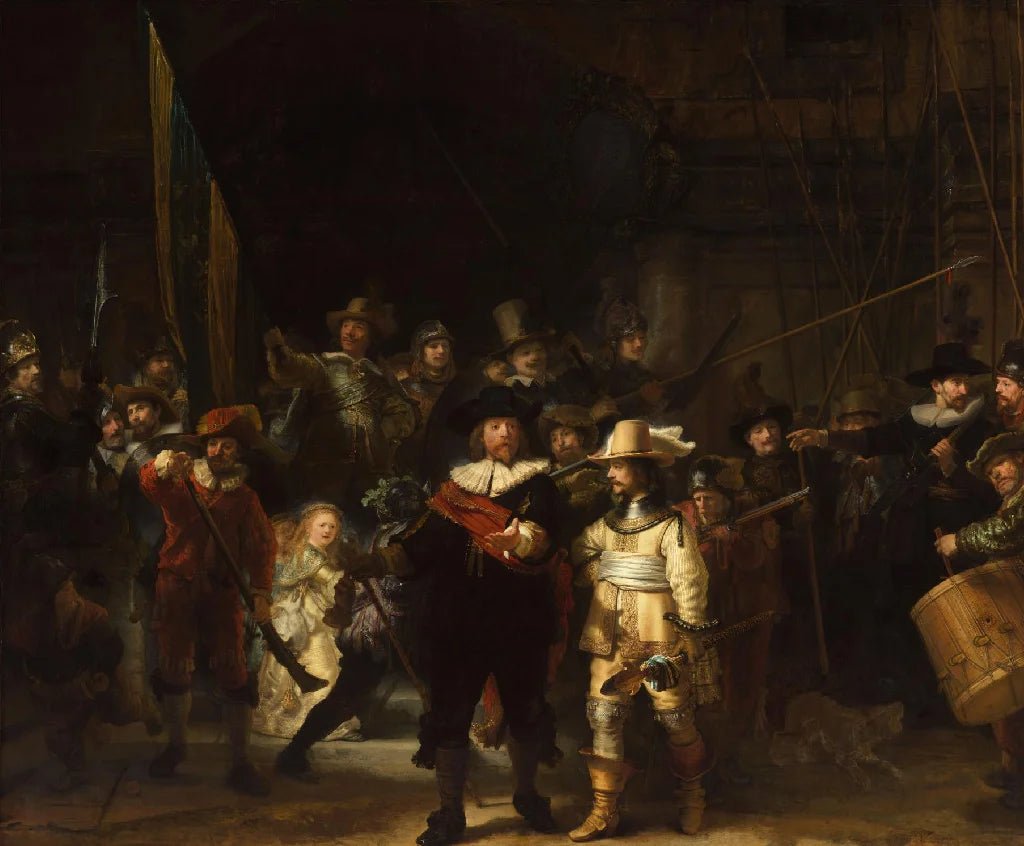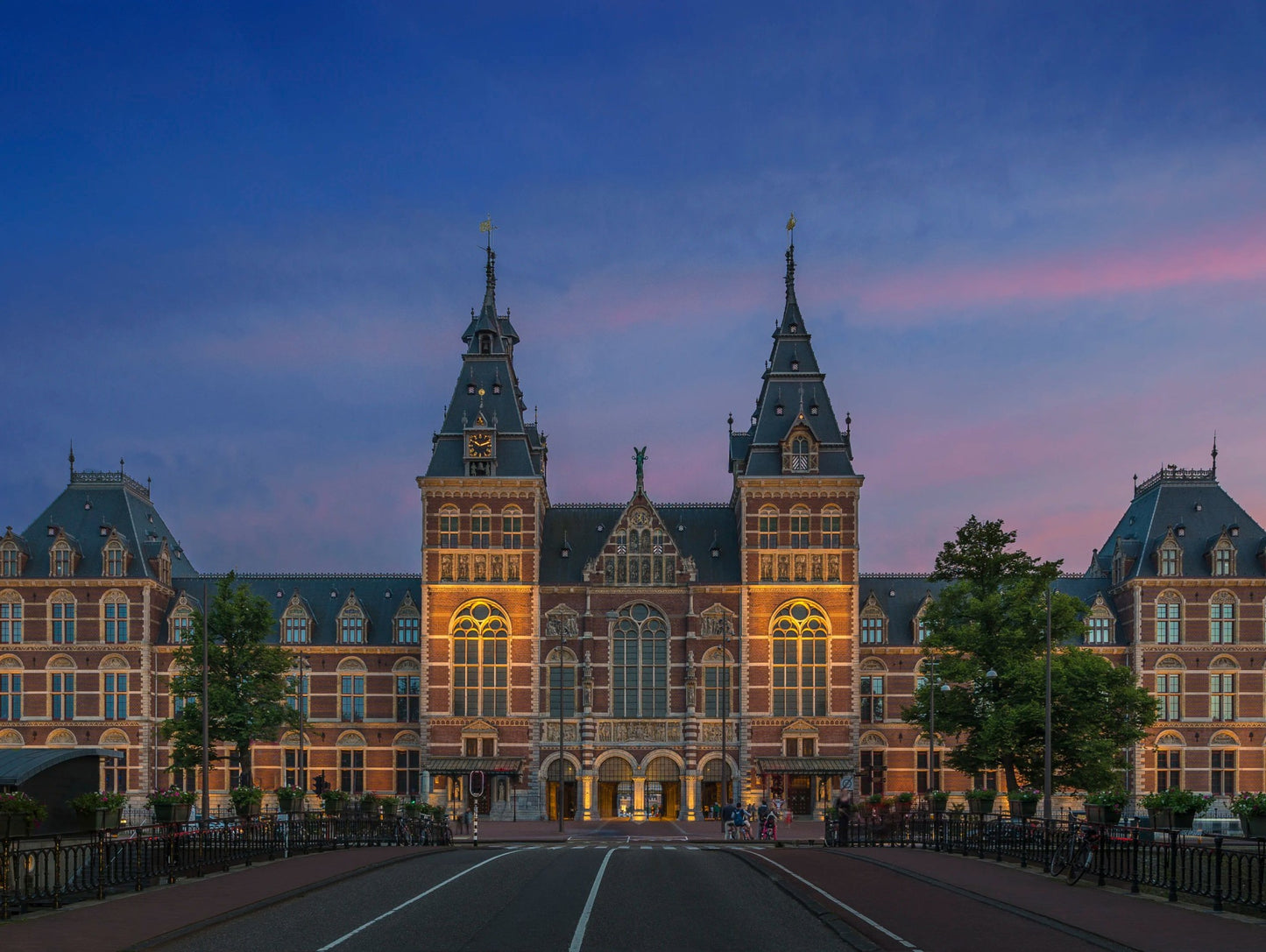The Night Watch by Rembrandt
Among the countless works of art that define the Dutch Golden Age, none looms larger—literally or figuratively—than The Night Watch, completed by Rembrandt van Rijn in 1642. Officially titled Militia Company of District II under the Command of Captain Frans Banninck Cocq, this monumental painting is one of the crown jewels of the Rijksmuseum in Amsterdam and a defining work in Western art history.
🧑🎨 The Artist and the Commission
Rembrandt van Rijn, already a celebrated portraitist by the 1640s, was commissioned to paint this large group portrait for the headquarters of Amsterdam’s civic guard. Such militia portraits were common at the time—usually stiff, static rows of armed men. But Rembrandt had a different vision. Rather than a formal lineup, he created a vivid, dramatic scene full of energy, interaction, and mystery.

The canvas was originally much larger but was trimmed in the 18th century to fit its new location in Amsterdam’s Town Hall. Even in its current form, measuring 3.6 by 4.4 meters, the painting overwhelms with its scale and dynamism.
💡 Light, Shadow, and Movement
What makes The Night Watch so revolutionary is Rembrandt’s use of chiaroscuro—the stark contrast of light and shadow—to direct the viewer’s attention and create a sense of motion. Captain Frans Banninck Cocq in black and his lieutenant in yellow stride forward from the crowd. Behind and around them, figures emerge from the dark like actors stepping onto a stage.
The painting is not actually set at night. Its dramatic lighting led to the misnomer The Night Watch, but Rembrandt likely intended it to be a daytime scene, dimmed by centuries of varnish (now removed during restorations).
🕵️♀️ Symbolism and Storytelling
The painting is a bustling snapshot of a company preparing for action. Drummers, musketeers, children, and even a dog fill the composition. One of the most enigmatic elements is a small girl in a golden dress—possibly a mascot or symbolic figure—illuminated almost supernaturally. She holds a dead chicken, the claws of which are believed to reference the arquebusiers (early riflemen) and their coat of arms.
Rather than a traditional portrait where each figure stares out, Rembrandt gives his subjects individual character and purpose, making them part of a narrative. Each man is doing something—loading a musket, shouting commands, waving a pike—turning a civic commission into a living tableau.
🔍 Technical Genius
Rembrandt’s genius lies not only in concept but also in execution. The brushwork, textures, and layering reveal his confidence and innovation. The depth is created through overlapping figures and masterful perspective. Movement flows diagonally, rather than statically from left to right, defying classical symmetry and creating a new kind of visual rhythm.
🏛 Restoration and Legacy
In 2019, the Rijksmuseum launched Operation Night Watch—a massive public conservation project using high-resolution imaging, X-rays, and AI to analyze and preserve the painting. Visitors could watch the restoration in real-time, further cementing the artwork’s iconic status.
The Night Watch has inspired countless artists, writers, filmmakers, and historians. It is a national symbol of the Netherlands and a masterpiece that continues to provoke admiration, debate, and awe.

✨ Why It Endures
At its heart, The Night Watch captures something uniquely human: motion, drama, individuality within a group, and the tension between shadow and light. It transformed the genre of group portraiture and remains one of the most celebrated paintings in the world.
Whether you stand before it in the Rijksmuseum’s grand gallery or study its details in print, The Night Watch pulls you into a moment that is both historic and timeless—forever alive in the glow of Rembrandt’s brush.
See The Night Watch by Rembrandt in:
Het Rijksmuseum Amsterdam
Alle details bekijken




